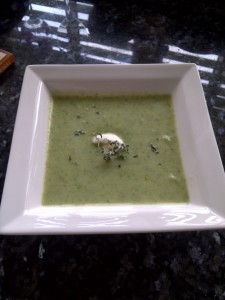Homemade marmalade is a real treat and loved by B&B guests. And the very best of marmalades is that made with seville oranges.
These days you can buy just about every fruit and vegetable all year round, but seville oranges seem to be the one fruit that you can still only buy in season.
So in January start looking out for these bitter oranges in your local greengrocers. They are in season through to February. I get very excited when they first appear, buying kilos of them to make the hundreds of jars of marmalade I get through at the B&B in a year. However after my 3rd batch I get bored of marmalade making.
I was explaining this dilemma to my lovely neighbours, Olive and Doreen, when they provided me with the solution. Seville oranges freeze beautifully. You don not need to anything with them apart from wash them, stick them in a bag and out them in the freezer. When you run out of marmalade you fcan cook them from frozen as per the recipe below.
My husband likes dark marmalade. To achieve this I replace 6oz of the white sugar with 6 oz of dark muscovado sugar. The great thing about this recipe is because it is made in 2 batches you could make half ordinary marmalade and half muscovado marmalade.
A few tips:
Seville Orange Marmalade
- Make sure you have a really large preserving pan. The marmalade does boil up to twice its volume when it’s going at full boil.
- Ensure you have a really hot heat to get it to boil properly ( the first time I cooked it it took 6 hours to get to boiling point because my AGA hot plate was not hot enough )
- Allow a whole afternoon to do it. You can not rush the process. I prefer a cold gloomy day when there is a good black and white movie I can watch on the kitchen tv
- 1kg Seville Oranges
- Juice and pips of 2 lemons
- 2kg granulated sugar
- 3 pints of water
Put the sugar somewhere to warm. The airing cupboard will do nicely.
Put the oranges and lemon juice and pips into a large pan.
Pour in 3 pints of cold water. Add a bit extra if it does not cover the oranges.
Bring to the boil, then pop on the lid and simmer at the lowest heat possible for 2 hours or until the oranges are soft. You can also put them in a low oven or bottom of the AGA if you have one.
When the oranges are tender. Put a colander over a large deep plate and put the oranges into drain, leaving the cooking liquid in the pan for now.
When they have cooled enough to handle, cut the oranges in half and scoop out all of the pith and pips into the liquid in the pan.
Bring to the boil for 7 minutes with the lid off.
Strain the liquid through a sieve, pressing it through with a spoon. You need as much of this thick liquid as possible as it is full of pectin which will make the marmalade set.
You now put half of the liquid into a large preserving pan.
Put 1 kilo of the warmed sugar into the pan.
Cut the peel into strips – as thin or as thick as you like ( this is much easier when the oranges are cooked than when doing it raw ). Add half of the peel to the pan.
Heat the liquid, sugar and peel until all of the sugar as dissolved. Then increase the temperature until it is boiling and will not calm down even when you stir it. Then boil rapidly for 15-20 minutes.
Test for a set by putting a teaspoon of marmalade on a plate that has been on the freezer. If it is setting then, after a minute, it will wrinkle up when you pull your finger through it.
Leave for 10 minutes then put into warm sterilised glass jars ( the easiest way to sterilise the jars is by putting them in the dishwasher on the hottest setting. If you don not have time to do this then fill them half full of water then put them in the microwave on full power until the water has boiled for at least a minute ).
I always use screw cap lids, which you can buy on the internet – much less hassle then waxed paper and cellophane. Put the screw caps on as soon as the marmalade is in the jar, then label with the date when cool.
Repeat the whole process with the other half of the liquid, peel and sugar.
This recipe will make about 7 or 8 1lb jars of marmalade.


